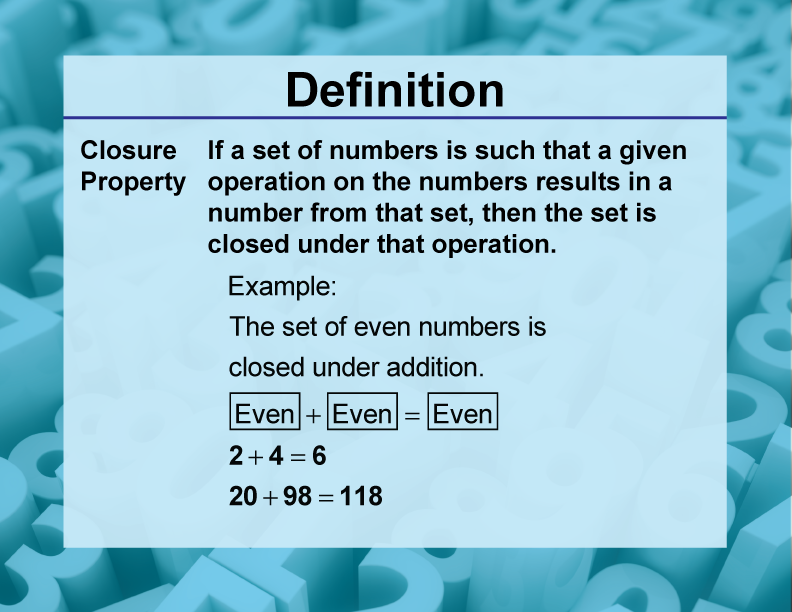
Display Title
Definition--Closure Property Topics--Closure Property
Display Title
Closure Property

Topic
Math Properties
Definition
The closure property in mathematics states that a set is closed under an operation if performing that operation on any elements of the set always results in another element within the same set. This fundamental concept is essential in defining mathematical structures and understanding the behavior of number systems.
Description
The closure property is a fundamental concept in mathematics that has far-reaching implications in various fields. It provides a framework for understanding how different number systems and mathematical structures behave under specific operations. In real-world applications, closure is crucial in fields such as computer science, where it ensures that operations on data types produce consistent and predictable results.
For example, the set of integers is closed under addition and multiplication. This means that adding or multiplying any two integers always results in another integer. Algebraically, we can express this as: For any integers a and b, a + b and a × b are also integers. This property is essential in computer programming, particularly in designing algorithms and data structures that rely on integer arithmetic.
However, not all sets are closed under all operations. The set of positive integers, for instance, is not closed under subtraction. This understanding helps in defining more complex mathematical structures like groups, rings, and fields, which are foundational in abstract algebra and have applications in cryptography and coding theory.
In math education, the closure property serves as a gateway to more advanced mathematical thinking. It encourages students to think critically about the nature of numbers and operations, fostering a deeper understanding of mathematical systems. By exploring which sets are closed under which operations, students develop logical reasoning skills and learn to make generalizations about mathematical behavior.
Teacher's Script: "Let's explore the closure property with rational numbers. If we take any two rational numbers and add them, like 1/2 + 3/4 = 5/4, or multiply them, like 2/3 × 3/5 = 6/15 = 2/5, we always get another rational number. Can you think of an operation where rational numbers might not show closure?"
For a complete collection of terms related to the Closure Property click on this link: Closure Property Collection.
| Common Core Standards | CCSS.MATH.CONTENT.HSN.RN.B.3, CCSS.MATH.CONTENT.HSN.CN.A.2 |
|---|---|
| Grade Range | 9 - 12 |
| Curriculum Nodes |
Algebra • The Language of Math • Numerical Expressions |
| Copyright Year | 2021 |
| Keywords | Closure Property |